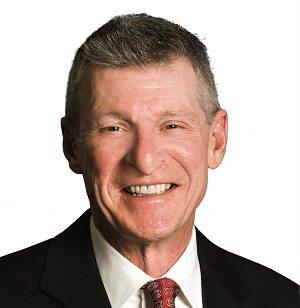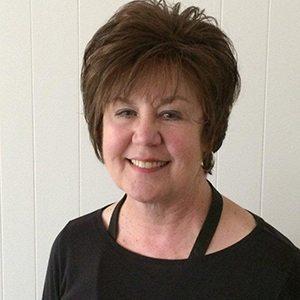The largest nursing specialty in the U.S., med-surg nursing covers a wide spectrum of experiences and patient care.
Nurse.com by OnCourse Learning's digital edition, "Explore If Med-Surg Nursing Is the Right Fit," has everything you need to get to know what the Academy of Medical-Surgical Nurses considers the foundation of all nursing practice. You won't want to miss our look at relevant topics such discharge planning in the article "Discharge planning starts at admission" and reducing ICU admissions in the article "Communication bundle helps med-surg patients avoid ICU." Writer Lisette Hilton highlights communication bundles and how they could prevent unplanned visits to the ICU. "Early recognition and prevention of deterioration has many health benefits for patients," said Cheryl Gagne, DNP, RN, CNEA, CNO at Southern New Hampshire Medical Center, where a communication bundle was created by combining an electronic early warning score system and nurses' judgment. "Failure to recognize early signs of clinical deterioration can lead to increased likelihood of failure to rescue events that are accompanied by unintended consequences and injury for patients." [caption id="attachment_48866" align="alignleft" width="200"] Robert G. Hess Jr., PhD, RN, FAAN[/caption]
Robert G. Hess Jr., PhD, RN, FAAN[/caption]
The broad reach offered by med-surg nursing is examined by Robert G. Hess Jr., PhD, RN, FAAN, executive vice president and chief clinical executive for OnCourse Learning. Hess explains how med-surg became its own specialty in 1991, pointing out the rewards of pursuing a career in med-surg.
"Medical-surgical nursing is not for the faint of heart," Hess writes. "The Academy of Medical-Surgical Nurses relates the unique characteristic of these practitioners is playing the role of master coordinator, remaining calm while juggling many patients and orchestrating care among many healthcare disciplines and nursing personnel. They become adept at assessing multiple body systems, often without the safety net of technology." The edition serves as a resource for nurses seeking their next great job. Want to know what employers are looking for in today's market? Nurses of all specialties might benefit from reading what employers want in med-surg nurses. Writer Marcia Frellick interviews Peter Buerhaus, PhD, RN, FAAN, a professor in the College of Nursing and Director of the Center for Interdisciplinary Health Workforce Studies at Montana State University in Bozeman. [caption id="attachment_51905" align="alignright" width="300"] Nancy Brent, MS, JD, RN[/caption]
Nancy Brent, MS, JD, RN[/caption]
"Nurses wanting to land jobs in the med-surg sector should make sure they know the meaning of 'value-based medicine; as the health system evolves from a fee-for-service model," Buerhaus said. "They should be able to articulate how they create value for an employer, adding the concept of providing value is not commonly taught in nursing school."
Readers will enjoy learning about the variety of tasks and opportunities med-surg nursing offers. Learn about the ways technology and evidence-based practice have transformed patient care and how to be flexible in med-surg nursing. Janice Petrella Lynch, MSN, RN interviews AMSN President Linda H. Yoder, PhD, MBA, RN, AOCN, FAAN.
"Patients are using tablets to communicate with nursing and physician teams, as well as input information into the admission database through the electronic medical record," Yoder said in her interview. "The patients also can use the tablets as a distraction technique while they are in the hospital. Maintaining privacy of patient information and keeping electronic devices up to date and in working order is essential but challenging."
The edition also offers a free continuing education module on how rounding leads to patient and nurse satisfaction and an article, "Language remains a barrier for some," by legal expert Nancy J. Brent, MS, JD, R. In the article, Brent explores how nurses need to ensure language barriers do not get in the way of providing good patient care. Read Explore if Med-Surg Nursing is the Right Fit today and discover what makes med-surg such an exciting career path! 
Also, download our 2018 Nurse.com Nursing Salary Research Report today to find out how your salary compares to your colleagues.
Courses related to 'med-surg nursing'
CE704: Alarm Fatigue Can Endanger Patients (1 contact hr) Over time, hospital clinicians become used to hearing an extensive number of alarms and tend to become desensitized to them, which leads to a lack of or delay in response. This phenomenon is called "alarm fatigue." This module provides nurses with information about the safety concerns associated with alarm fatigue and evidence-based strategies to reduce it. 60286: Rhythm Recognition: Getting to the Heart of the Matter (3.75 contact hrs) ECG rhythm recognition and analysis continues to be a major nursing responsibility in the acute care setting, yet has expanded beyond into other clinical settings. Since the advent of bedside monitoring and coronary care units in the 1960s, the ability to understand and interpret a bedside monitor is no longer an expectation of only critical care and emergency nurses. Medical/surgical, ambulatory, OR, and even primary care nurses need to be competent in ECG rhythm analysis, a competency which is supported by the notable increase in patients requiring ECG monitoring. With an understanding of basic cardiac physiology and practice, successful ECG interpretation is possible. Gaining proficiency in ECG interpretation and rhythm recognition can help the nurse to intervene efficiently and effectively in a potentially difficult clinical situation and, ultimately, improve patient outcomes. CE649: Preventing Suicide in Medical Settings (1 contact hr) According to the Centers for Disease Control and Prevention, suicide is the 10th leading cause of death in the U.S. Inpatient settings are not designed to house patients who are suicidal, and healthcare professionals working in those settings often lack the specialized training to deal with patients at risk for suicide. Additionally, patients who commit suicide in hospital settings often have no previous documented psychiatric history. This activity will address the detection and treatment of suicidal ideation in all medical settings.






